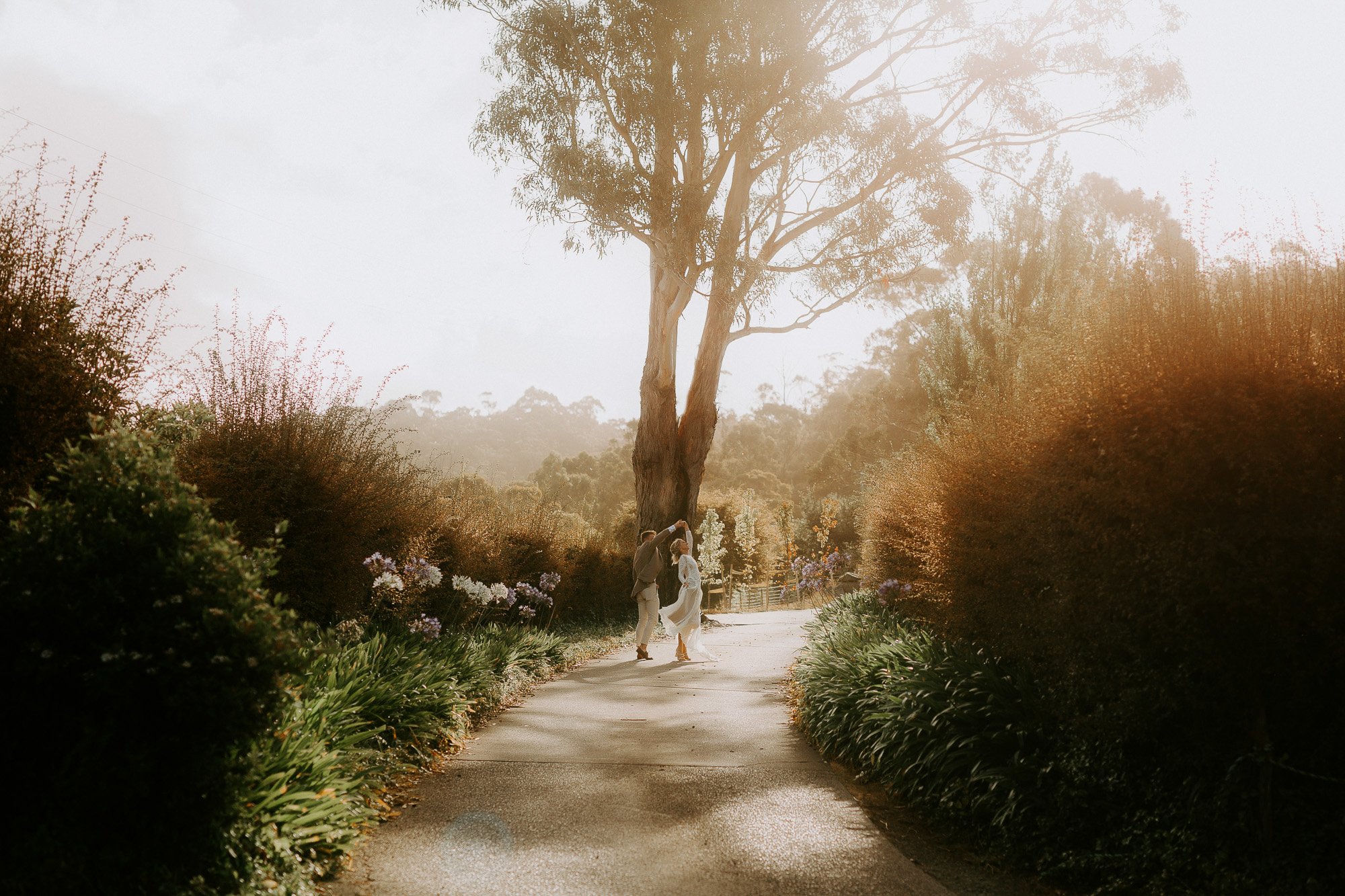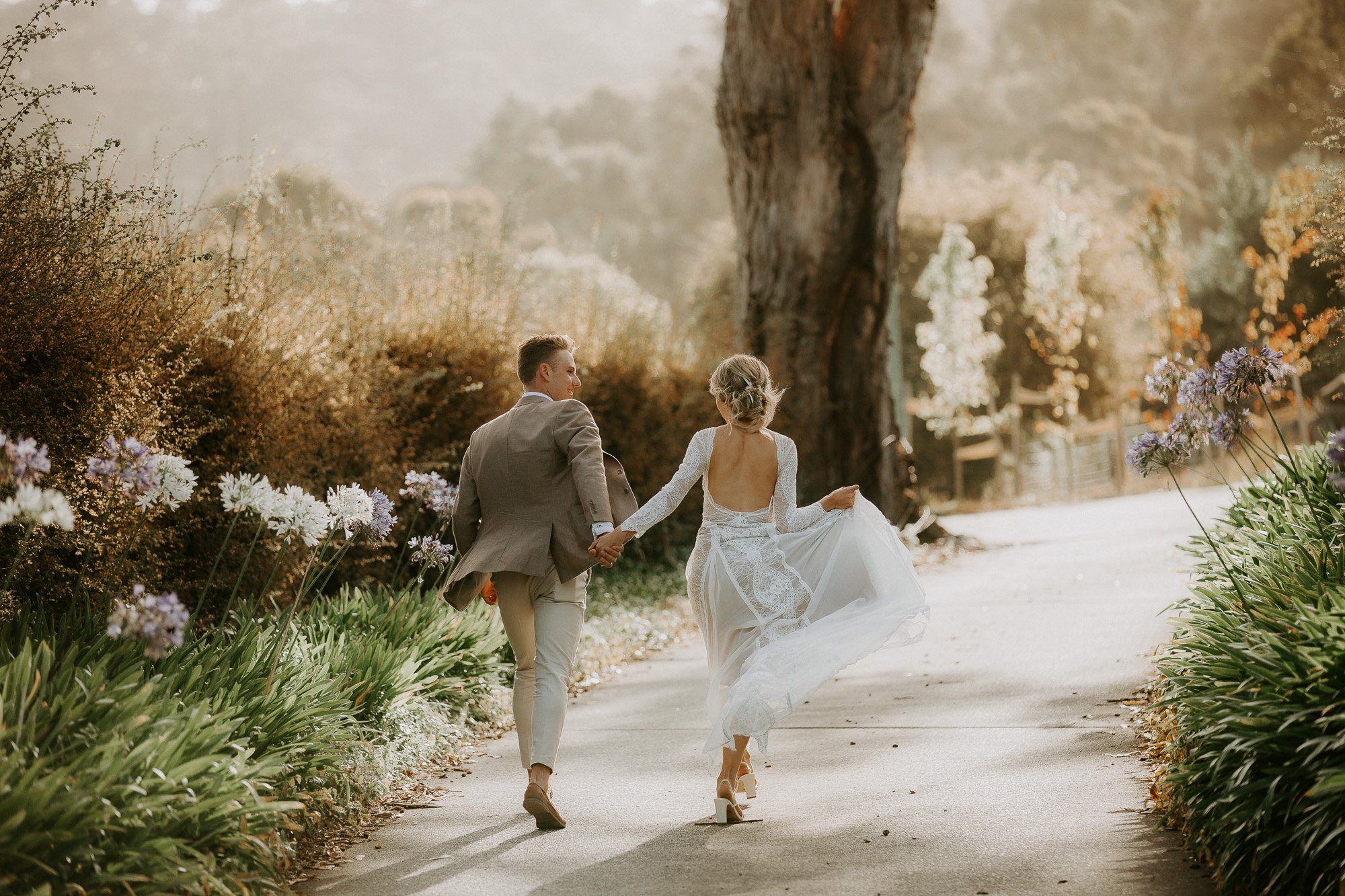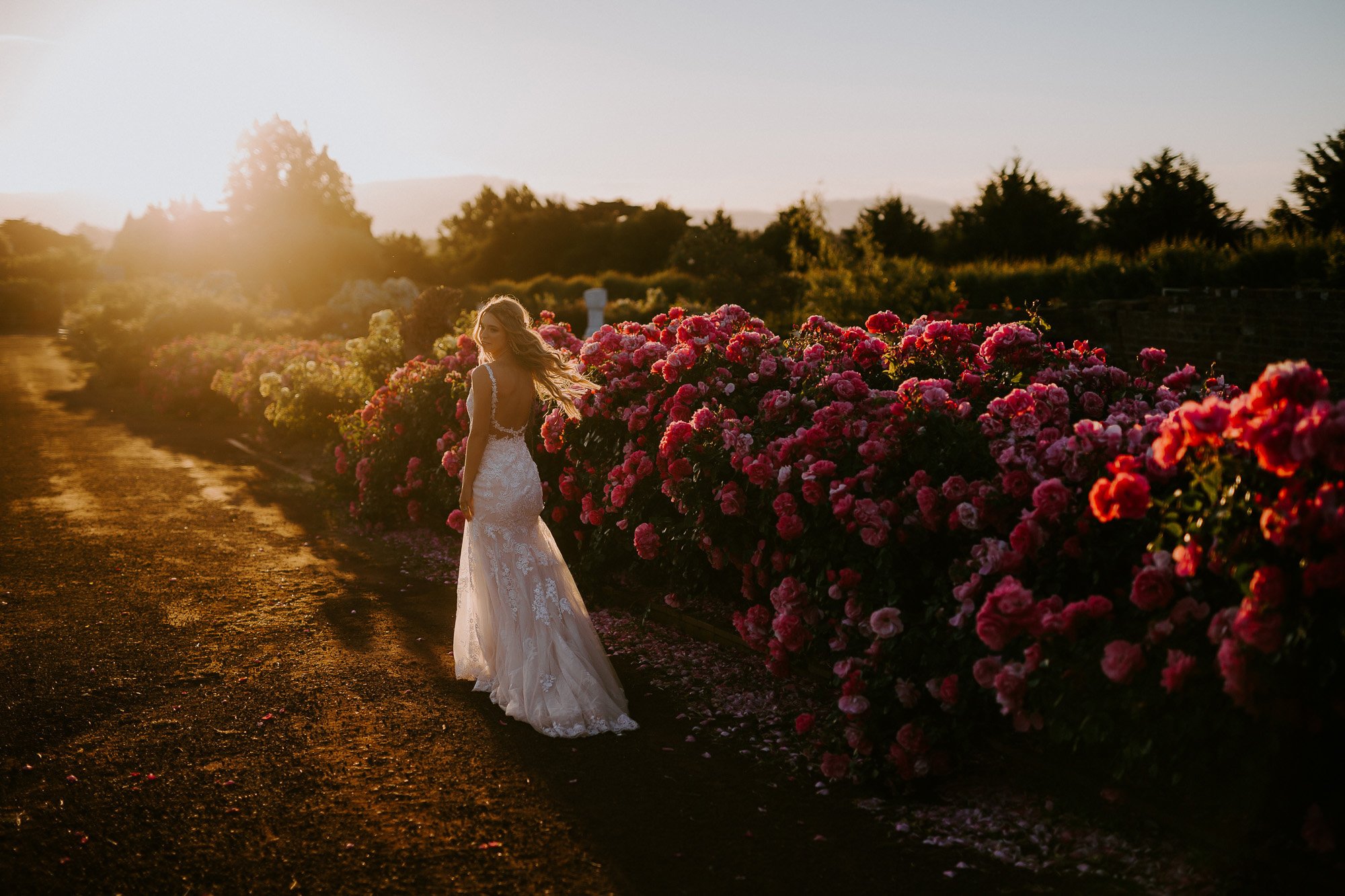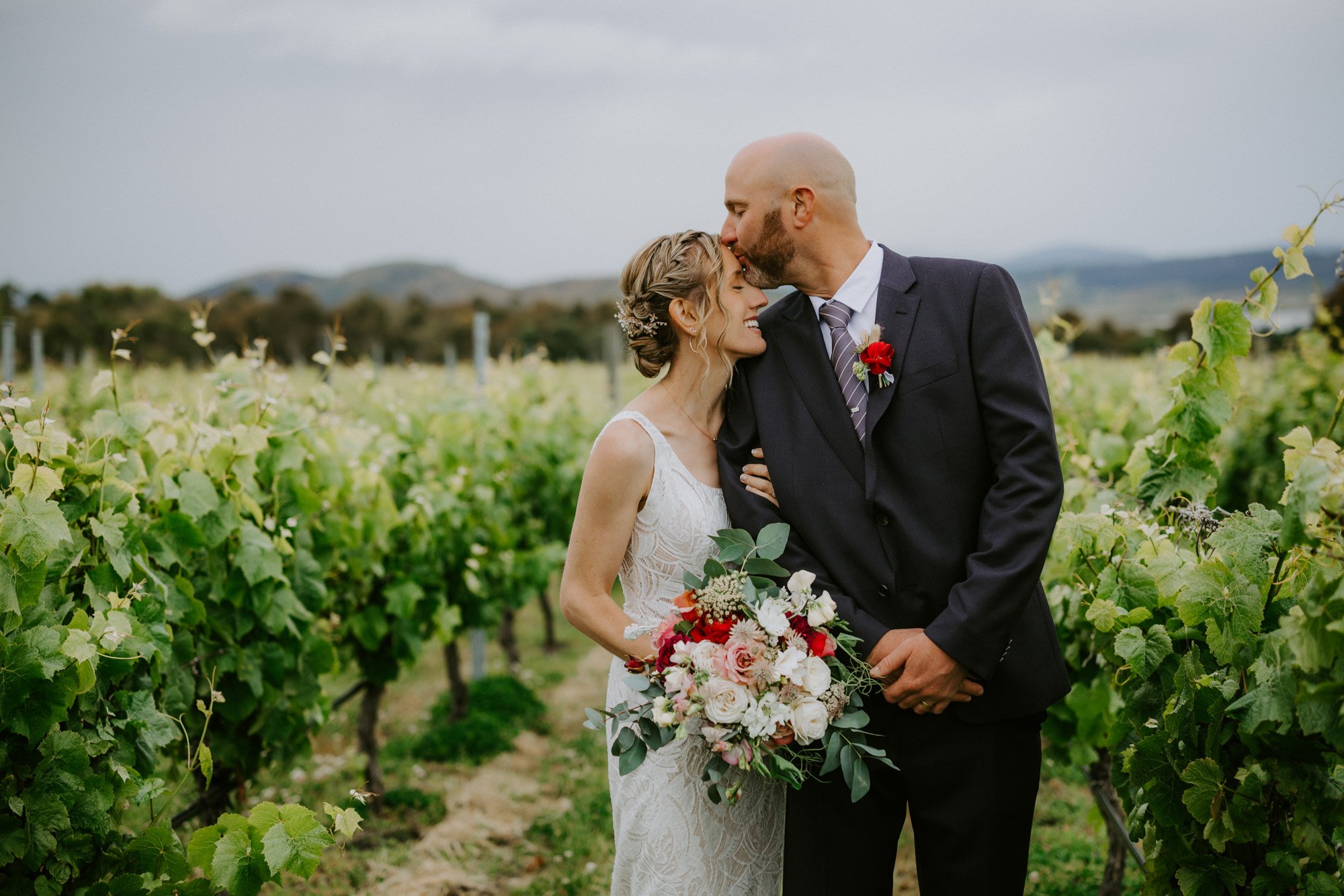The Magic of Golden Hour: Scheduling Your Wedding Photos
As the sun dips towards the horizon, casting a golden hue across the sky, a brief moment of magic unfolds - the golden hour. This coveted time, when daylight transitions to dusk, has long been revered by photographers for its soft, diffused light that can turn a simple photograph into a work of art. In the realm of wedding photography, the golden hour is not just a time of day; it's an opportunity to capture the essence of love and joy in the most ethereal light.
But why does this particular hour hold such allure, and how can couples ensure that their wedding photos bask in its golden glow? This article delves into the enchanting world of golden hour photography, unravelling the reasons behind its desirability and offering practical tips on how to seamlessly integrate this magical lighting into your wedding day schedule. From understanding the nuances of timing to coordinating with your photographer, we'll explore how to make the most of this fleeting yet mesmerising light to immortalise your special moments.
Join us as we journey through the golden hour - a time when the sun's soft embrace enhances every smile, kiss, and tender glance, turning your wedding photos into timeless treasures.
What is the Golden Hour?
The golden hour, often referred to as the magic hour, is a period shortly after sunrise or before sunset when the sun is low in the sky, producing a soft, diffused light. This light is markedly different from the harsh midday sun that can create strong shadows and overexposed spots. During the golden hour, the sun's low angle results in a warm, golden hue that gently illuminates the subjects, creating a dreamlike and romantic atmosphere.
Why the Golden Hour is Ideal for Wedding Photography:
Soft Light: The golden hour's soft light flatters the subjects, reducing blemishes and wrinkles, and creating a glowing effect on the skin.
Long Shadows: This time of day creates elongated shadows, adding depth, dimension, and a sense of drama to the photographs.
Warm Colours: The warm tones of golden hour light can enhance the romantic and intimate feel of wedding photos.
Unique Backdrops: The changing sky, from vibrant oranges to soft pinks, offers a stunning backdrop for wedding portraits.
Capturing wedding photos during the golden hour is not just about the light; it's about embracing a mood that can transform an ordinary photo into a poignant memory. This magical light, combined with the emotions of the day, can lead to truly breathtaking wedding photos that couples will cherish forever.
Ulla and Egor Wedding Photography Duo in Gold Coast
Challenges and Solutions in Scheduling Golden Hour Wedding Photos
While the golden hour offers unparalleled beauty for wedding photos, capturing these moments requires careful planning and flexibility. The timing of the golden hour varies depending on the location, date, and weather conditions, posing certain challenges for couples and photographers.
Challenge 1: Timing Variability
Solution: Work closely with your photographer to track the exact timing of the golden hour for your wedding day. Utilise online tools or apps that predict the sun's position and timing.
Challenge 2: Limited Duration
Solution: The golden hour is fleeting, often lasting less than an hour. Plan a concise shot list ahead of time to make the most of these precious minutes.
Challenge 3: Weather Dependence
Solution: Have a backup plan in case of cloudy or unfavourable weather. Overcast conditions can still provide beautiful soft lighting.
Challenge 4: Wedding Schedule Conflicts
Solution: Coordinate your wedding day timeline to include a window for golden hour photography. This might mean scheduling a brief photo session separate from other festivities.
Challenge 5: Guest Considerations
Solution: If stepping away from your guests for photos, consider timing it during a transition period, such as post-ceremony and pre-reception, to minimise disruption.
Successfully navigating these challenges requires collaboration between the couple and their photographer. By being proactive and flexible, you can capture the enchanting moments of the golden hour, adding an extra layer of magic to your wedding memories.
Maximising Golden Hour Photography in Different Seasons
The golden hour's characteristics vary with each season, presenting unique opportunities and challenges for wedding photography. Understanding these seasonal nuances can help couples plan effectively to capture stunning golden hour photos any time of the year.
Spring and Summer:
Longer Days: The golden hour occurs later in the day during these seasons, offering more time for evening celebrations and photos.
Vibrant Colours: Use the lush greenery and blooming flowers of these seasons as a natural backdrop.
Tip: Start the wedding later in the day to align with the late golden hour, ensuring ample time for photos.
Autumn:
Rich Hues: Autumn's golden hour is known for its intensely warm tones, complementing the season's natural palette of oranges and reds.
Earlier Sunset: The sun sets earlier, requiring earlier scheduling for photography sessions.
Tip: Plan for an afternoon ceremony to smoothly transition into a golden hour photo shoot.
Winter:
Crisp Light: Winter offers a clearer atmosphere, resulting in more distinct golden hour light.
Shorter Days: The sun sets early, necessitating an earlier start to the wedding festivities.
Tip: Embrace the season's character with cozy accessories and decorations that reflect the winter's golden glow.
By considering these seasonal aspects, couples can work with their photographers to create a tailored approach that ensures their wedding photos fully capture the magic of the golden hour, regardless of the time of year.
Ulla and Egor Wedding Photography Duo in Gold Coast
Technical Considerations for Golden Hour Wedding Photography
Capturing the ephemeral beauty of the golden hour requires photographers to have a keen understanding of various technical aspects. These considerations ensure that the soft, warm light of the golden hour is harnessed to its full potential, creating breathtaking wedding photos.
Camera Settings and Equipment:
Exposure: Adjusting exposure is crucial to avoid overexposing the sky or underexposing the couple. Spot metering can be helpful in balancing the light.
White Balance: Set the white balance to capture the golden hour's warm tones accurately. Manual adjustment may be necessary to avoid overly cool tones in auto settings.
Lens Choice: Fast lenses are preferable, as they can capture more light and create a dreamy bokeh effect that complements the golden hour's softness.
Lighting Techniques:
Backlighting: Position the couple with the sun behind them to create a halo effect and emphasise the romantic atmosphere.
Fill Light: Use reflectors or a soft fill flash to illuminate the couple's faces, especially when backlit by the sun.
Silhouettes: Experiment with silhouettes for a dramatic effect, where the couple's outline against the setting sun creates a striking image.
Composition and Creativity:
Use of Environment: Incorporate the surrounding landscape to add depth and context to the photos.
Flare and Sunbursts: Use the sun's position to create lens flare or sunbursts for a whimsical effect.
Dynamic Angles: Experiment with different angles and perspectives to capture the unique interplay of light and shadows.
Understanding and skilfully manipulating these technical elements can significantly enhance the quality and emotional impact of golden hour wedding photos. It's a dance between art and science, where technical prowess meets creative vision.
Backup Plans for Non-Ideal Golden Hour Conditions
Even with meticulous planning, the unpredictability of weather can impact the anticipated golden hour conditions. Having a well-thought-out backup plan ensures that regardless of the weather, the photography session remains a highlight of your wedding day.
1. Overcast and Cloudy Weather:
Soft Diffused Light: Cloud cover can diffuse sunlight, providing a soft and even light that is excellent for photography.
Dramatic Sky: Use the dramatic cloud formations as a dynamic backdrop for your photos.
Plan: Discuss with your photographer the potential of utilizing overcast conditions to create a unique mood in your photos.
2. Rain or Stormy Weather:
Indoor Locations: Identify indoor or sheltered locations that can offer a beautiful setting for your photos.
Umbrellas and Rain Boots: Incorporate fun and colourful umbrellas or rain boots into your photos for a playful touch.
Plan: Have a list of nearby indoor locations that reflect your wedding’s theme and can serve as alternative photo spots.
3. Unexpected Delays:
Flexibility in Schedule: Build some buffer time into your wedding day schedule to accommodate delays.
Alternative Lighting: If the golden hour is missed, consider using artificial lighting techniques to mimic its warmth.
Plan: Coordinate with your photographer to have flexible timings and lighting options ready.
4. Seasonal Considerations:
Winter Early Darkness: Plan for an early ceremony or photo session to make the most of the limited daylight.
Summer Heat: Schedule a later photo session to avoid the midday heat and capture the golden hour as the day cools.
Plan: Adjust your wedding timeline based on the season to optimise lighting conditions.
Remember, sometimes the most memorable and unique wedding photos come from embracing and creatively utilising the unexpected. Open communication with your photographer is key to successfully navigating any changes in plans.
Real-Life Examples of Golden Hour Wedding Photography
Nothing illustrates the magic of golden hour photography quite like real-life examples. These stories not only showcase the stunning visual effects but also provide insight into how couples and photographers can collaborate to capture these moments.
Example 1: A Beachfront Sunset Ceremony
Story: A couple chose to have their ceremony on the Gold Coast just as the golden hour began. The setting sun cast a warm glow over the ocean, creating a breathtaking backdrop.
Photography Strategy: The photographer used the natural backlighting to create a halo effect around the couple, capturing the romantic essence of the moment.
Outcome: The photos featured a perfect blend of the couple’s silhouette against the vibrant colours of the sunset, embodying the romantic ambiance of their beach wedding.
Ulla and Egor Wedding Photography Duo in Gold Coast
Example 2: Rustic Countryside Elegance
Story: Set in a rustic vineyard, this couple’s golden hour photography captured the essence of the countryside’s natural beauty.
Photography Strategy: Utilising the golden hues of the setting sun filtering through the vine leaves, the photographer created a series of intimate, warm, and richly coloured photos.
Outcome: The resulting images highlighted the couple amidst the golden vineyards, reflecting the warmth and joy of their celebration.
Example 3: Urban Chic Downtown Wedding
Story: An urban wedding in a metropolitan area where the golden hour light reflected off the city's buildings, creating a unique urban glow.
Photography Strategy: The photographer captured the couple against the backdrop of the illuminated cityscape, blending the urban elements with the soft sunset light.
Outcome: The photos beautifully juxtaposed the softness of the golden hour against the hard lines of the urban environment, showcasing the couple’s love story in a modern setting.
These examples demonstrate the versatility of golden hour photography and how it can be adapted to various wedding themes and locations. They also illustrate the importance of a photographer's skill in utilising natural light to enhance the beauty and emotion of the wedding day.
Ulla and Egor Wedding Photography Duo in Gold Coast
Enhancing Wedding Photo Styles with Golden Hour Lighting
The golden hour's unique qualities can elevate different photographic styles, adding a layer of enchantment and emotional depth to wedding photos. Here's how this magical time of day can complement various wedding photography styles:
1. Classic and Timeless:
In classic wedding photography, the golden hour provides a soft, flattering light that enhances the elegance and timeless beauty of traditional poses and settings.
The warm tones and soft shadows add depth and a romantic ambiance, perfect for capturing the quintessential wedding portrait.
2. Contemporary and Artistic:
For a more contemporary style, the golden hour offers a canvas for creativity. Photographers can experiment with silhouettes, lens flares, and dramatic backlit scenes to create visually striking and artistic images.
The interplay of light and shadow can be used to craft unique compositions that are modern and dynamic.
3. Candid and Natural:
The relaxed and soft nature of golden hour light is ideal for capturing candid moments. It creates a comfortable environment where couples can naturally interact, resulting in genuine and heartfelt images.
The golden glow can add warmth to spontaneous laughs, tender glances, and joyful celebrations, enhancing the emotional resonance of candid shots.
4. Vintage and Bohemian:
For weddings with a vintage or bohemian theme, the golden hour provides a nostalgic and whimsical quality to the photos. The warm hues and soft illumination complement vintage attire, decorations, and natural settings.
This light can accentuate the rustic and earthy elements of a bohemian wedding, aligning perfectly with the aesthetic of these themes.
5. Dramatic and Theatrical:
Golden hour light can be a powerful tool for creating dramatic and theatrical wedding photos. The contrast between light and dark, the elongated shadows, and the vivid colors of the sky can create a sense of drama and intensity.
This lighting is ideal for couples who want their wedding photos to make a bold statement and stand out.
Incorporating the golden hour into different photography styles requires a photographer who is not only technically skilled but also creative and adaptive to the couple’s vision. The right use of this enchanting light can turn wedding photos into a diverse and captivating visual story of the couple's special day.
Ulla and Egor Wedding Photography Duo in Gold Coast
Conclusion: Embracing the Enchantment of the Golden Hour
The golden hour is more than just a timeframe; it's a fleeting spectacle of nature's beauty that can elevate the art of wedding photography. Its soft, warm light not only enhances the visual appeal of your photos but also imbues them with an emotional depth and romantic allure that is unparalleled.
As we've explored, whether your style is classic or contemporary, candid or dramatic, the golden hour's transformative light can elevate your wedding photos to a realm of timeless beauty. It's a period that celebrates love in its most radiant form, capturing not just images, but the very essence of your most cherished moments.
For couples planning their wedding, considering the golden hour in your photography schedule is an investment in memories that will last a lifetime. It's an opportunity to encapsulate the love, joy, and beauty of your special day in a light that does justice to these profound emotions.
And for photographers, mastering the art of golden hour photography is about understanding the delicate balance between light and time, and using it to tell a story that resonates with warmth and authenticity. It's about capturing the fleeting moments that, like the golden hour itself, are precious and irreplaceable.
In conclusion, the golden hour is not just a segment of the day; it's a magical period that can transform your wedding photos into a gallery of golden memories. By embracing its charm, you allow the natural brilliance of your love to shine through, creating a legacy of images that will be treasured for generations to come.
Ulla and Egor Wedding Photography Duo in Gold Coast
Ulla and Egor Wedding Photography Duo in Gold Coast
FAQ Section: Golden Hour Wedding Photography
Q1: How long does the golden hour last?
A1: The duration of the golden hour varies but typically lasts about an hour after sunrise or before sunset. However, this can be shorter or longer depending on the geographical location and the time of year.
Q2: What if the weather is bad during our scheduled golden hour photo session?
A2: Weather can be unpredictable, so it’s important to have a backup plan. Overcast weather can still provide beautiful lighting conditions. Additionally, your photographer can use artificial lighting to mimic the golden hour's warmth.
Q3: Can we still get good golden hour photos in urban settings?
A3: Absolutely! The golden hour light in urban settings can create stunning contrasts and add a unique character to your photos, reflecting off buildings and creating interesting shadows.
Q4: Do we need any special equipment or props for golden hour photography?
A4: Generally, no special equipment or props are needed. However, your photographer might use reflectors to manage shadows and highlights. Sometimes, simple props like lanterns can add a romantic touch.
Q5: Is golden hour photography more expensive?
A5: It shouldn't be more expensive, as it's more about timing than additional costs. However, discuss this with your photographer as part of your wedding photography package.
Q6: How can we ensure our wedding schedule aligns with the golden hour?
A6: Work with your photographer and wedding planner to track the timing of the golden hour on your wedding day and plan your schedule accordingly. Flexibility is key to making the most of this time.
Q7: What styles of wedding photography are best suited for the golden hour?
A7: Golden hour photography is versatile and can enhance various styles, from classic and romantic to contemporary and artistic. It’s more about how your photographer utilizes the light to match your desired style.
Q8: Can golden hour photos be taken on a cloudy day?
A8: Yes, even on a cloudy day, the golden hour can provide a unique and soft lighting that is ideal for photography, though the golden hues may be less pronounced.
Ulla and Egor Wedding Photography Duo in Gold Coast







